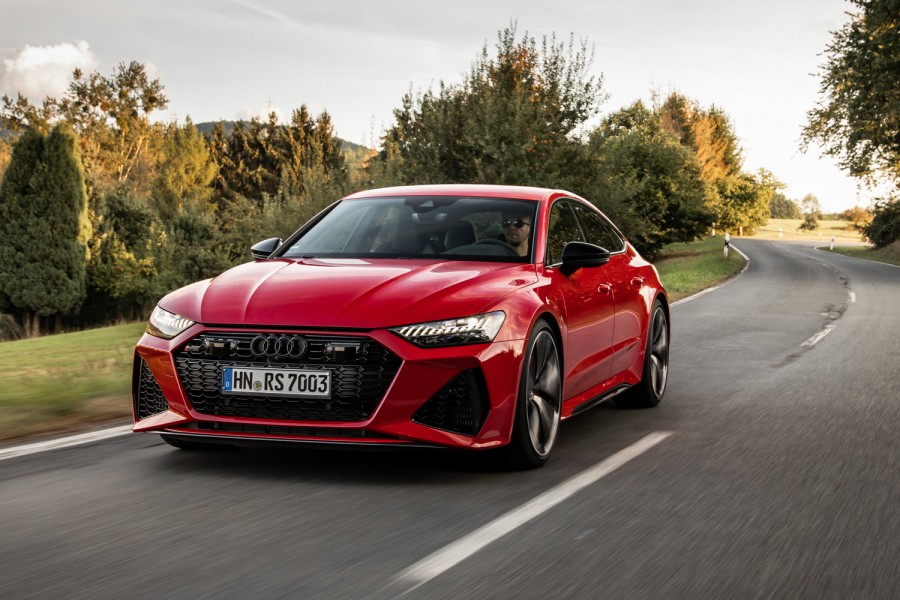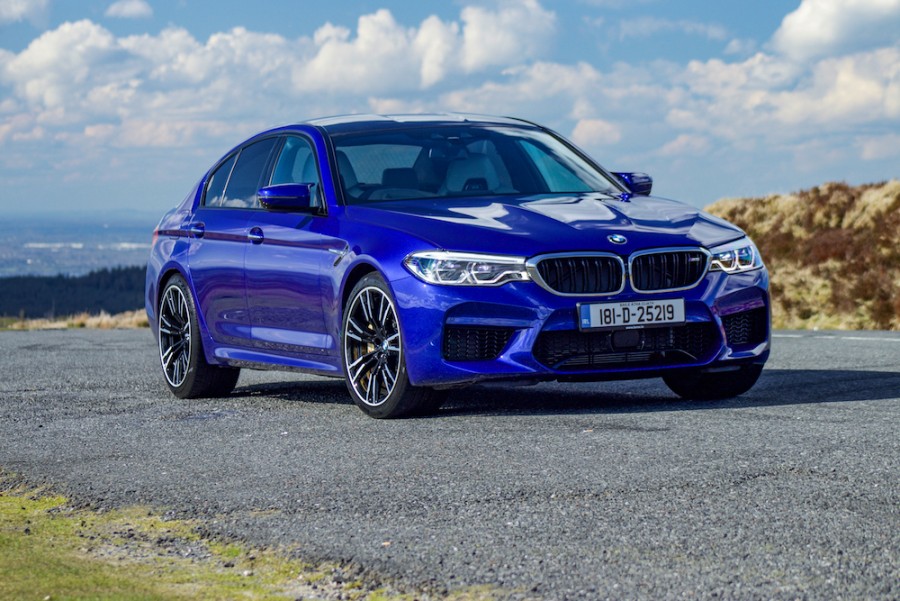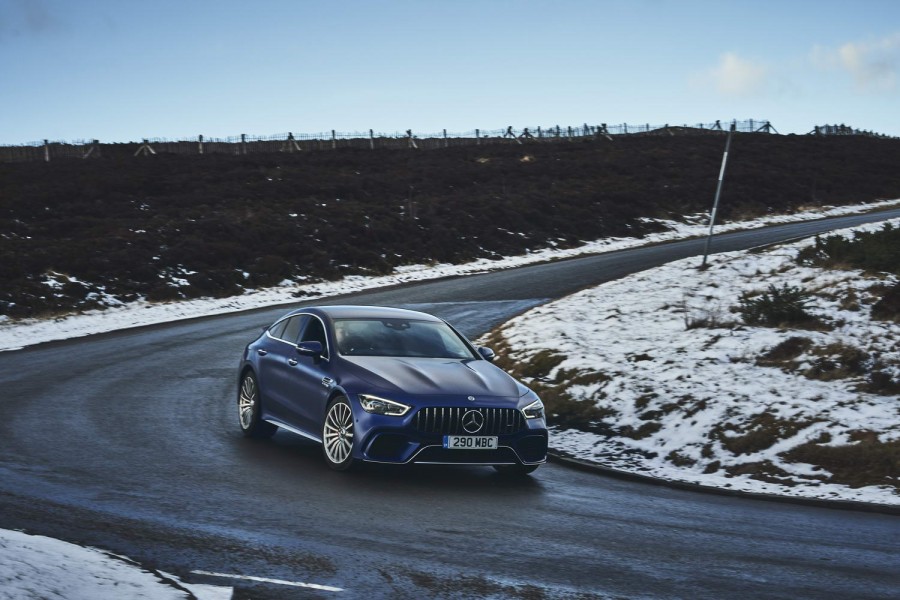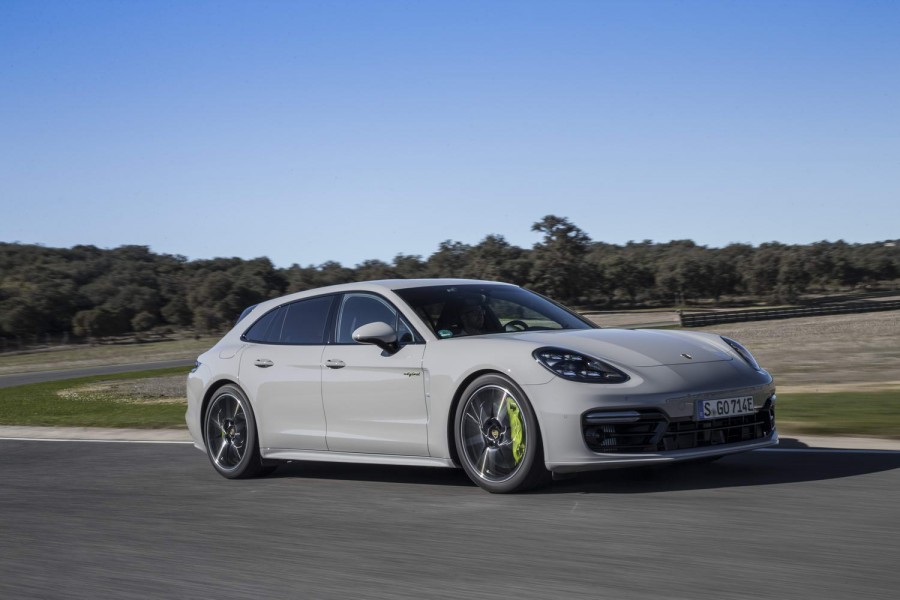If you were to level one criticism at the previous Audi RS 7 Sportback, it was that its appearance was just a little too demure. Not so with this second generation, as it gains a wider track and unique bodywork, not to mention mild-hybrid electrification and performance upgrades that see power output rise to 600hp.
In the metal
There was some arm-twisting involved at board level to help get this more muscular Audi RS 7 Sportback over the line. One of the major feedback points from existing customers was that the first-generation RS 7 didn't look sporty enough, lacking in the wheel arch department - as shown by the Audi RS 6. In all, the new RS 7 Sportback is 40mm wider than the standard Audi A7, and that means only the bonnet, front doors, roof and tailgate carry over. Every other panel is new and bespoke to the RS model. Filling those arches are sizeable 21-inch wheels as standard, but you can have 22-inch rims as an option.
Its more aggressive appearance is emphasised by details that include a unique grille design that appears larger by doing away with its inner frame. Additional ventilation on the lower corners of the bumper aid thermal management and serve as an opportunity for Audi's designers to underline the car's visual presence by including upright planes. Other design features include matrix LED laser headlights that carry dark bezels, and an RS-specific animation of the full-width rear LED light unit.
On the inside, it's mostly the same as the regular A7 Sportback, which is no bad thing. The quality of every surface you come into contact with, physically and visually, is top-notch, and some additional touches are specific to the RS 7. The digital instrument display provides bespoke screens allowing you to monitor and record almost every aspect of the car's performance that you'll want to know. Two RS buttons serve as shortcut functions to pre-set driving modes and chassis settings. So, if you have an all-out mode for hitting your favourite section of road, you don't need to waste time switching between the myriad of settings every time. It would be easy to gloss over the practical elements, but people will use this as an everyday car. So, to that end, the tailgate opens to reveal a shallow but vast boot holding up to 535 litres and it can increase to 1,390 litres when you drop the rear seats down. Speaking of which, unlike the first RS 7, which was a four-seater, this time around, the car comes with the choice of seating for five.
Driving it
Despite tipping the scales at 2,065kg, this car is capable of moving at a phenomenal rate. From a standing start it ticks off the 100km/h mark in 3.6 seconds. Find a stretch of de-restricted Autobahn empty enough and the optional top speed of 304km/h is possible. We say optional because, to achieve that, you have to tick a few boxes, such as the ceramic brake upgrade package that includes monster 440mm discs up front gripped by huge 10-piston callipers. If you're intending on going very quickly, having the best brakes possible is usually a good idea.
The thing with the RS 7 Sportback, which is part of the sheer appeal of it, is just how unlike a car with 600hp and 800Nm it behaves. As we pass through the quaint German towns along our test route, we go virtually unnoticed. The biggest giveaway is more likely to be the vibrant Tango Red paintwork because, let's face it, nobody buys an Audi A7 or RS 7 in anything other than the various shades of grey that are available.
Helping to keep this car under the radar is the mild-hybrid system. By adding 48-volt electrification and a small lithium-ion battery located in the rear of the vehicle, it can shut off the engine from 21km/h as you slow to a stop. A belt alternator starter restarts the engine more smoothly and quietly than a traditional starter, adding to the car's refined nature. The system can also switch off the engine on the move for up to 40 seconds when conditions are suitable. This operation can happen between 55- and 160km/h providing the battery is sufficiently charged and the driver is not using the throttle. The extra battery keeps everything moving, so the restart is smooth enough for it to go unnoticed by the occupants. Think of it as stop-start on the move.
A second feature is the engine's cylinder-on-demand (COD) function. When the car is cruising in higher gears at part throttle, it will deactivate four of the eight cylinders, leaving it to run as a V4. Audi says that this can help to reduce fuel consumption by up to 0.8 litres/100km and, similar to the engine-off mode, once more throttle is applied, the dormant cylinders immediately reactivate. Clever tech, but in reality, few RS 7 Sportback buyers are likely to be all that focused on eking out every drop of petrol.
The 4.0-litre turbocharged V8 is a peach of an engine. Beyond the 600hp and thumping 800Nm of torque that it produces, the delivery of that performance is what makes it all the more exciting and impressive. As we mentioned, it deals with town traffic with the utmost ease, but when you use the throttle pedal with more intent, the rate of acceleration is astonishing for a car of this size. It's quick enough to keep your skull pressed firmly against the padded headrest and all-enveloping enough to make you feel like you're being pushed along by a tsunami of torque.
Part of why it feels that way is the lack of tyre squeal or theatrics. To help lay down that power so cleanly, the car uses Audi's quattro all-wheel-drive technology, which includes a mechanical centre differential and an RS-tuned sport differential on the rear axle. In standard guise, it provides a 40:60 front-to-rear split, but up to 70 per cent of power can go to the front axle or up to 85 per cent to the rear, depending on the situation. It handles direction changes under accelerative load with ease, thanks to the rear-wheel steering, too. During a winding hill climb section it only began to show signs of the quattro system struggling to manage its weight when we pushed it beyond what most would likely attempt in everyday driving.
The standard setup comprises of newly developed adaptive air suspension that uses new pistons and updated spring rates. It allows for three different drive modes and has an automatic self-levelling function. Compared to the regular Audi A7, the RS 7 sits 20mm lower, and when the speed surpasses 120km/h, the ride height reduces by a further 10mm to optimise aerodynamics and aid stability. As an alternative to the air suspension, Audi also offers the option of its Sports Suspension with Dynamic Ride Control. In this, the shock absorbers are diagonally opposed, meaning the front left is hydraulically linked though a central valve with the rear right, and vice versa. This setup works to reduce pitch and roll movements when cornering at higher speeds and when driving quickly it works well, but for the majority of the time, it seems that bit too stiff when compared to the variety of absorption that the air suspension can provide. If you take your driving very seriously, then you may want to consider it, but sticking with the standard adjustable air suspension will in no way detract from the RS 7's breadth of capability.
Predictably, this Audi is capable of tremendous speeds should you find yourself, as we did, on a de-restricted section of Autobahn. Impressively, even cruising well past the 200km/h barrier you barely have to raise your voice when having a conversation, such is the level of refinement and insulation inside. The RS 7 is a car that makes the dispatch of vast distances easy.
What you get for your money
Pricing for the Audi RS 7 Sportback has yet to be confirmed for Ireland, but with the Audi S7 costing from €96,667, and the smaller RS 5 Sportback starting at €114,050, it's safe to say that the RS 7 will cost considerably more than both. When the price and exact specs are confirmed, this section of the review will be updated.
Summary
This latest Audi RS 7 Sportback is, without a doubt, an improvement over its predecessor in every way. Not only does it bring supercar levels of performance to a highly refined luxury car, but it is now wrapped in a more appealing package. That fuller body narrows the divide that previously separated it and its RS 6 sibling, and the standard five-seat setup adds greater usability. On the one hand, it is mightily impressive at how it conducts itself, though more enthusiastic drivers may find it just a touch too sanitised. But as a complete package that handles the (really) fast stuff with aplomb yet is so liveable with on a day-to-day basis, the RS 7 Sportback is right up there with the best.







































